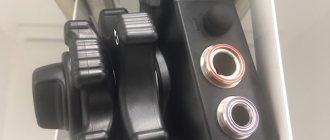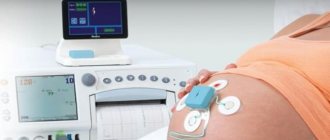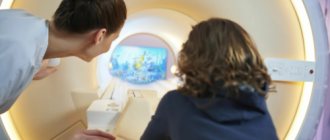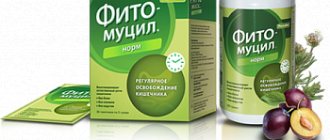According to the technique of performing a colonoscopy of the intestine for a child, it is done in the same way as for an adult: the diagnostician inserts an endoscope equipped with a miniature camera at the end into the CT scanner and takes pictures that are saved on a medium. During the examination, the doctor sees all the features of the abdominal organs and evaluates their compliance with the norm. During the procedure, the diagnostician takes small fragments of potentially problematic areas of the mucosa for subsequent biopsy, if necessary. Colonoscopy for children is performed under general anesthesia.
When is a colonoscopy prescribed for children?
Pediatric colonoscopy is prescribed according to indications, for already diagnosed intestinal diseases, or if there is suspicion of:
- Inflammatory bowel diseases;
- Congenital anomalies of the formation of parts of the intestinal tract;
- Internal bleeding;
- Dysbacteriosis of unknown origin;
- Polyps visualized on ultrasound;
- Tumors in the intestine.
Indications for a pediatric colonoscopy include the following symptoms:
- Prolonged diarrhea;
- Frequent constipation;
- Worrying abdominal pain and discomfort during bowel movements;
- Atypical discharge from the anus during bowel movements (this may be purulent discharge, mucus, blood, translucent exudate).
During a colonoscopy, children have polyps discovered during the examination, as well as other growths that form on the mucous membrane, removed.
Colonoscopy for children: examination features
Colonoscopy is an examination of the intestines using an endoscope.
The procedure makes it possible to visually assess the condition of the mucous membrane and blood vessels, determine the presence of inflammatory processes, hemorrhoidal cones, tumor growths, polyps and foreign bodies. Colonoscopy is performed for diagnostic and therapeutic purposes. To obtain reliable results, preparation is an important factor. Pediatric colonoscopy has a number of features in terms of performance and preparation. To avoid unwanted complications, taking into account the characteristics of childhood, this procedure is performed under light anesthesia. Parents should strictly follow doctor's instructions to prepare for a colonoscopy for their child.
Indications for the procedure:
- to identify the causes of intestinal bleeding;
- to study the nature of the inflammatory process;
- if abnormalities in the large intestine are suspected;
- to remove a foreign body;
- during medical procedures;
- for removal of tumors, polyps;
- to take material for a biopsy.
Features of colonoscopy in children
In the review “Cleansing, diet and other stages of bowel preparation for colonoscopy,” Kroncolit has already made a detailed analysis of the peculiarities of the procedure in adults. Preparing a child for a colonoscopy follows a similar scenario, but with some differences in:
- Dosages of drugs at the bowel preparation stage;
- The amount of anesthesia administered;
- The size of the endoscope (colonoscopy for children is performed using a device with a smaller diameter).
After a colonoscopy, children require observation at the procedure clinic (usually the patient is not discharged for several days). As a rule, during diagnosis, the child is not given anesthesia using a mask method due to the risks of intestinal contractions and distorted diagnostic results. Instead, intravenous injections are used.
Adults do not always require anesthesia, but due to fear and discomfort during the examination, it is almost impossible to keep the child in a static position, so general anesthesia is necessary. Additionally, stress factors for the child play a role.
Pediatric colonoscopy: how it is performed
This examination is not pleasant and can cause understandable fear, so a colonoscopy for a small child is performed under light anesthesia. After the necessary preparation (diet, enemas, laxatives and sedatives), the child is given intravenous anesthesia medication and placed on his left side. To make it easier for the probe to pass through the intestines, a small amount of air is pumped into the anus. Using a mini-camera located at the end of the endoscope, images are displayed on a monitor. The images help the doctor to examine in great detail the intestinal mucosa, its vessels and changes occurring in the organ. We remind you that this examination must be carried out exclusively by a highly qualified specialist. If you are interested in where you can have a colonoscopy for children in Kyiv, check out the services of our professionals: https://www.dobrobut.com/. Our clinic has modern equipment and qualified doctors with many years of experience. Don’t risk your baby’s health – turn to professionals.
At what age can children have a colonoscopy?
Intestinal examinations in children are carried out both in early and teenage years. Colonoscopy has no special restrictions: if there are indications, the endoscopic method is considered one of the best in diagnosis (due to accuracy).
Colonoscopy is done, even for newborns. The procedure is carried out in specially equipped neonatal units if the child is less than three years old. Against the background of persistently alarming symptoms, endoscopic examination is more advantageous from the point of view of evaluative comparison of other invasive and non-invasive techniques. As an alternative, a virtual colonoscopy may be prescribed (diagnosis is performed using a special computer scanner).
How to prepare a child for a colonoscopy
Pediatric colonoscopy, although considered an ordinary minimally invasive method of examining the intestines, requires strict preparation, on which the accuracy of the result depends on 95 percent. Therefore, doctors urge parents and guardians of children to take the period of preparation for the procedure as responsibly as possible and follow all recommendations that are discussed individually. Otherwise, there is a high probability of distorted research results.
In general terms, these are the recommendations:
- On nutrition.
Table 1. Preparing a child for a colonoscopy. Diet

It is necessary to start following a diet no later than three days before the child’s scheduled colonoscopy. During this period, it is important not to include in your diet foods that cause increased gas formation in the intestines. Therefore, doctors strongly do not recommend soda, legumes, sweets, and other high-risk foods. The last meal (dinner the day before the bowel examination) should not be heavy. Your child can drink water on the morning of the colonoscopy.
- By cleansing.
On the eve of the bowel examination, children undergo cleansing with laxatives (prescribed by a doctor) and/or enemas with special solutions.
Preparation for the procedure
Proper preparation will help you carry out the procedure without difficulties and complications and avoid errors. One of the mandatory components is diet. When writing a referral, the doctor will definitely tell you what you can and cannot eat before a colonoscopy.
The goal of the diet is to completely cleanse the digestive tract of waste deposits and feces. Preparation begins 3 days before the examination.
What to eat before a colonoscopy:
- lean meats and fish;
- dried wheat bread;
- vegetable broths, boiled vegetables;
- dairy products;
- boiled eggs;
- biscuits, honey, jelly;
- weak tea, still water, clear juices, compote;
- On the day of the examination, you can only drink water.
Prohibited foods are fresh vegetables and fruits, herbs, pasta, cereals, black bread. You cannot eat smoked meats, pickles, marinades, chocolate, or any fast food. Drinking milk, coffee, alcoholic and carbonated drinks is contraindicated.
The second mandatory stage of cleansing for colonoscopy is an enema. It should be placed in the evening and in the morning before the study. The volume of water for one procedure is at least 500 ml. On the day of the examination, the enema is done twice in the morning with an hour interval.
Additionally, you need to stop taking antidiarrheal medications, iron-based medications, and drink more fluids.

Is it dangerous to have a colonoscopy in childhood?
There are no age restrictions for pediatric colonoscopy. Complications after the procedure occur in rare cases if the doctor makes a mistake and violates the integrity of the intestinal walls, damaging the mucous membrane, or allowing a rupture - perforation.
Risks are eliminated if a colonoscopy for a child is performed in a specialized clinic and by a specialist.
There are still some inconveniences during a pediatric colonoscopy:
- The procedure can only be performed by trained personnel in a specialized medical facility;
- Considering the preparatory period, the duration of the procedure is quite long - from several days to a week;
- Lack of direct contact with the patient, who cannot report discomfort or pain, and reaction accordingly (if the child is undergoing a colonoscopy under anesthesia).
It is extremely important: examination of the intestines in children should be carried out in a clinic equipped with an intensive care unit. The staff of medical workers must have an on-duty resuscitation team in case of unforeseen circumstances. In practice, emergency assistance during colonoscopy is rarely required. However, different scenarios are possible.
Will there be side effects from anesthesia or colonoscopy?
Pediatric colonoscopy is a common practice and rarely causes complications. However, risks cannot be excluded:
- Allergic reaction to medications used during an intestinal examination;
- Discomfort in the anal area after the procedure;
- Increased gas formation;
- Increase in temperature.
In extremely rare cases, due to improper conduct during colonoscopy in children, the integrity of the mucous membrane or walls of the intestinal tract is compromised.
Unexpected allergic reactions and soreness of the anus are eliminated with the help of carminatives and creams. In case of severe pain due to elevated temperature, medical consultation is required.
Differences between colonoscopy for children and the procedure for adults
The pediatric procedure differs from the examination of adults in the following ways:
- smaller probe size;
- more thorough preparation;
- different dosage of laxative during preparation;
- use of anesthesia (up to 12 years);
- the need to monitor the child’s condition for several more hours after the procedure (requires being in the clinic)
Colonoscopy is performed for children under general intravenous anesthesia, because the mask affects intestinal contraction.
Are there any contraindications
There are two types of contraindications to pediatric colonoscopy - relative and absolute.
Relative contraindications to examining the intestines in children using colonoscopy:
- Internal bleeding (accumulation of blood in the abdominal cavity or intestines will interfere with an accurate diagnosis; the procedure is done only in extreme cases when the patient’s life depends on its outcome);
- Recent surgery (strip surgery);
- Diverticulitis (protrusion of the intestinal walls complicates the movement of the endoscope during pediatric colonoscopy);
- Hernia in the groin or navel area;
- The presence of an artificial valve in the heart muscle.
Absolute contraindications to examining the intestines in children using colonoscopy:
- Severe shock, in which blood pressure values are below 77 mm Hg. st;
- Acute phase of ulcerative colitis or Crohn's disease with bleeding;
- Perforation of the intestine and removal of intestinal contents within the abdominal cavity;
- Cardiac pathologies that increase the risk of critical complications after anesthesia.
The diagnostician may refuse to perform the procedure if parents or guardians did not know how colonoscopy is performed on children and did not take into account the importance of the preparatory stage, i.e., they ignored the preparation rules.
What happens at the time of diagnosis
Before anesthesia is administered, close relatives can be with the child to avoid possible stress. Having undressed, the patient is placed on the prepared couch on his side.
Then the doctor or support staff treats the devices they will work with with an antiseptic. To facilitate insertion, the endoscope is lubricated with gel at the end.
To straighten the internal bends, the intestines are filled with air. After inserting the endoscope, the diagnostic process itself begins: optical equipment takes CT images of the cavities. Afterwards, the probe is removed, the air is deflated, and the anus is treated with an antiseptic.
Upon completion of a pediatric colonoscopy, the child is transferred to a ward where he is monitored and comes out of a state of drug-induced sleep. Depending on the assessment of the child’s condition after colonoscopy, the doctor may insist on a hospital stay of up to several days.
Who needs a colonoscopy and why?
We find out what diseases can be identified using this procedure and what will happen if it is not completed on time.
– Please tell me who needs to undergo a colonoscopy and how often? How much does this procedure cost? Does it go away with pain relief?
Videocolonoscopy is an endoscopic examination of the intestine. It is prescribed to clarify the diagnosis, as well as to prevent colorectal cancer. At the same time, colonoscopy is recognized as the “golden” diagnostic standard, explains Andrey Drozdov, an endoscopist with 26 years of experience from the Naedine Clinic.
Why do you need to have a colonoscopy?
Often during examination, especially in people over 40 years of age, intestinal polyps are discovered - a benign formation, which is the growth of glandular epithelium from the wall of the rectum into its lumen. In most cases, polyps develop in the rectum and lower part of the colon, and less often in the higher parts of the colon.
The main danger of polyps is that malignant processes can begin in such neoplasms. In fact, polyps are precancerous conditions, so when detected, they are removed and sent for histological examination, explain coloproctologists of the Naedine Clinic Sergey Shorin and Anatoly Kokorin.
Those at risk include those who have hereditary factors, who in their diet prefer refined foods (baked goods made from white wheat flour, sugar, refined vegetable oil), animal foods and insufficient coarse fiber, and often suffer from constipation.
The main problem with polyps is that pain does not occur until serious complications begin. Small polyps up to a few millimeters in diameter do not bother patients at all and can only be detected during an examination of the colon. Large polyps can ulcerate and lead to bleeding.
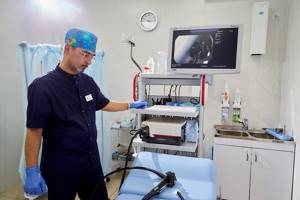
Andrey Drozdov, endoscopist
It is precisely because of the absence of any signs in the early stages that colorectal cancer is considered one of the most insidious types of this disease, notes Andrey Drozdov. And at a late stage of the development of this disease, it can be extremely difficult to save a person.
Therefore, people over 40-45 need to regularly, at least once a year, visit a proctologist and have a colonoscopy. But if you have relatives suffering from polyposis, you need to start getting checked after 20 years, doctors advise.
The main measure for preventing colon cancer is the timely removal of small, almost always asymptomatic polyps. For the convenience of the patient, this surgical procedure is performed directly during a colonoscopy - detected polyps are immediately removed.
Is it true that colonoscopy is painful and dangerous?
There are three options for performing a colonoscopy: without pain, under intravenous anesthesia, and under medicinal sleep - anesthesia. Under anesthesia, patients not only do not feel pain, but also get rid of feelings of fear and anxiety.
“I usually carry out an endoscopic examination within half an hour, and half an hour to an hour after it (at this time the patient is under the supervision of the clinic’s medical staff), the patient is restored to full functionality,” notes Andrey Drozdov. — During the day after a colonoscopy, under medicated sleep, it is not recommended to drive or drink alcohol. There are no other restrictions.
Also, some patients fear that during a colonoscopy there is a risk of intestinal damage and infection with some disease. However, according to doctors, this probability is extremely low; the most important thing is that the examination is carried out by an experienced specialist.
“As for infection, it is possible due to poor-quality processing of colonoscopes,” says Andrey Drozdov. — At the Naedine Clinic, instruments are processed automatically using special disinfectants. This completely eliminates the risk of infection.
How much does a colonoscopy cost?
Currently, the Naedine Clinic has modern expert-class equipment that allows for a full range of examinations and diagnostics. The clinic’s call center employs experienced consultants who will answer all the patient’s questions and tell them how to prepare for the procedures. All detailed information can be found on the clinic’s website klinika-naedine.ru.
Here you can choose one of three survey options:
- diagnostic video colonoscopy - 4,400 rubles;
- diagnostic video colonoscopy with anesthesia - 4,900 rubles;
- Diagnostic video colonoscopy under medicated sleep - RUB 7,900.
Every week in the official VKontakte group of the Naedine clinic, specialists’ answers to questions from subscribers are published. You can send your questions by email: [email protected] and also ask them on the clinic’s website.
Clinic "Alone":
- Kirov, st. Dzerzhinsky, 6;
- telephone;
- Opening hours: from 8:00 to 20:00 (Mon - Fri), from 8:00 to 18:00 (Sat), from 8:00 to 16:00 (Sun).
The clinic is open 7 days a week, seven days a week.
Take care of yourself!
License LO-43-01-002872 dated September 26, 2018

Main photo: coloproctologist Vasilisa Chernyatkina and endoscopist Roman Vorobyov
On this topic
3622
Is it possible to apply for benefits if there is no official income?
Pediatric colonoscopy: what to look for after the procedure
For most young patients, 1-2 days are enough for complete rehabilitation after colonoscopy. The child may be restless on the first day. To eliminate stress in this case, sedatives are indicated.
The first stool occurs 24-48 hours after examination of the intestines. If your child is unable to have a bowel movement, you should tell your doctor. To facilitate bowel movements, enemas are prescribed.
Fever, malaise, severe pain are reasons for additional consultation with a specialist.
